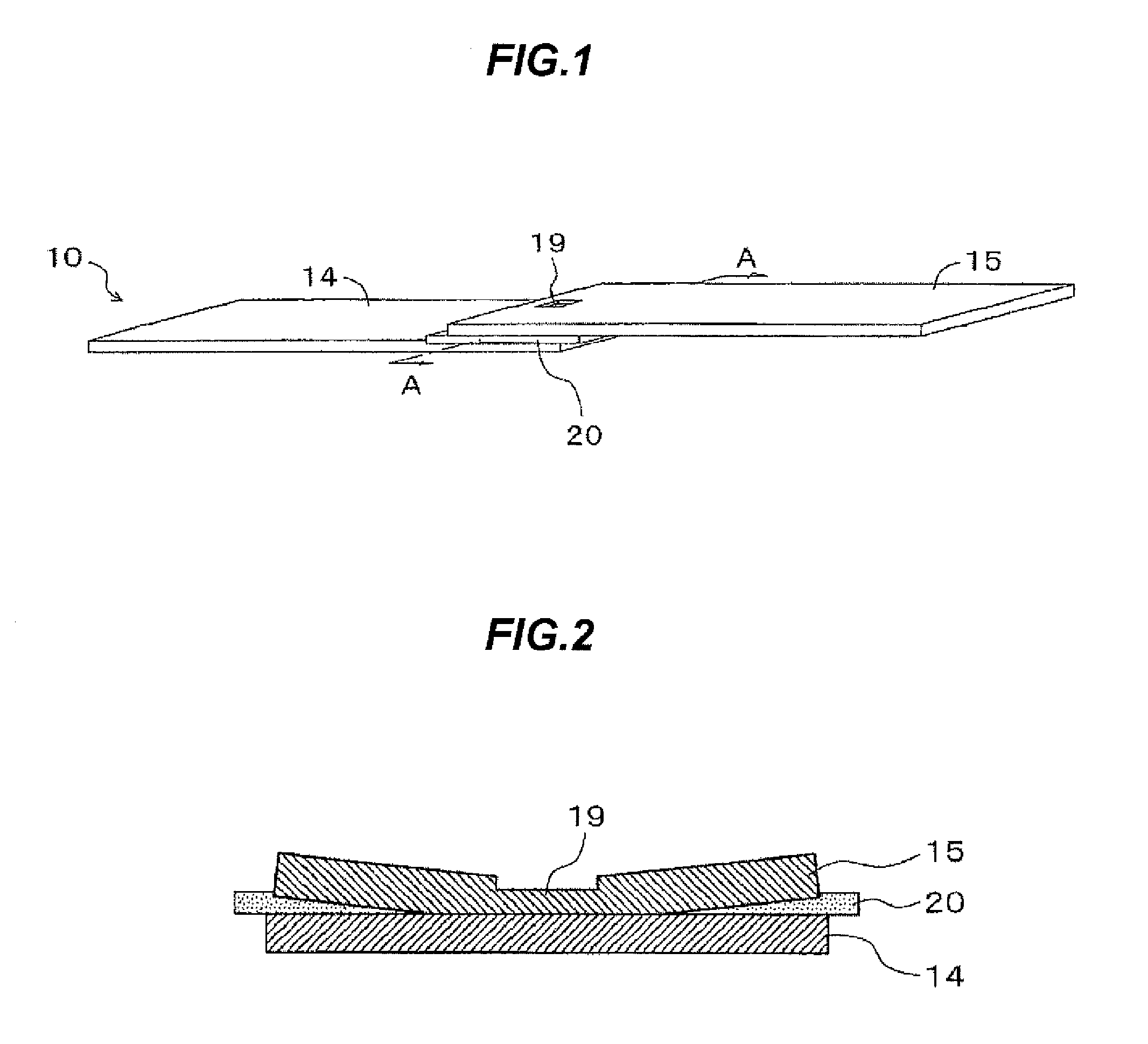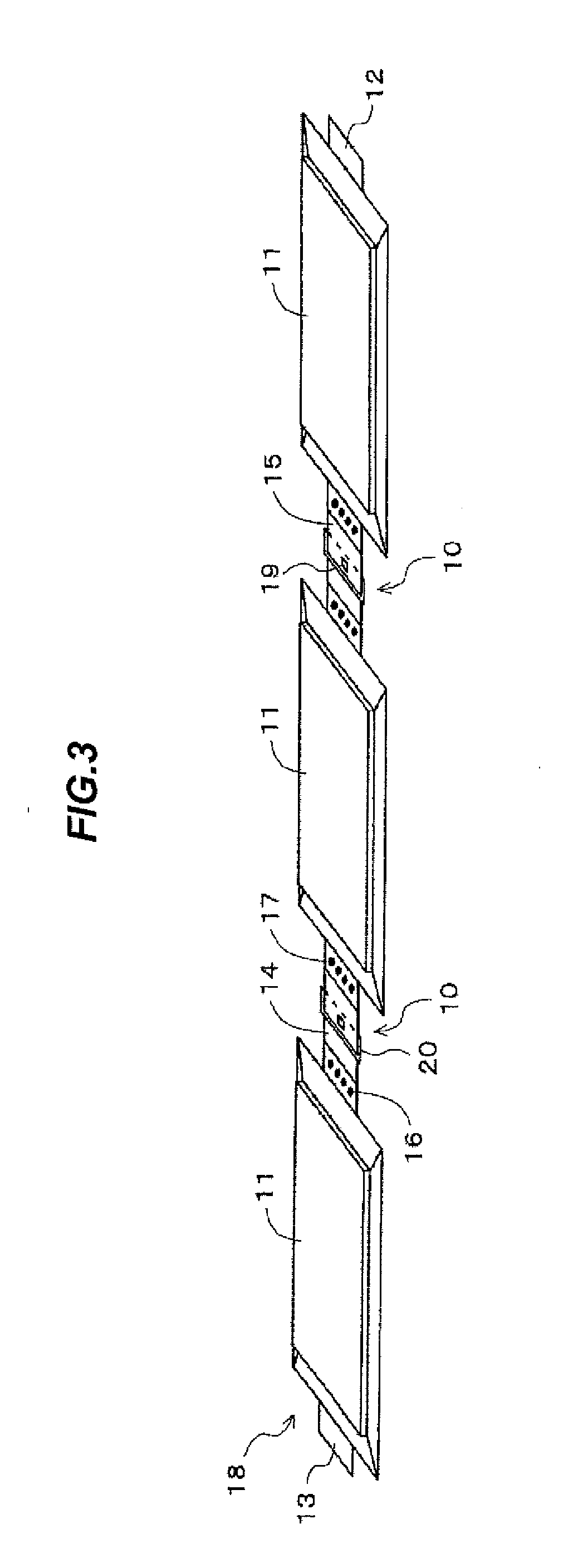Electrode lead connection body, nonaqueous electrolyte electricity storing device and method of manufacturing the same
a technology of electrolyte storage device and electrode lead, which is applied in the direction of cell components, final product manufacturing, sustainable manufacturing/processing, etc., can solve the problems of poor workability of a form of assembled battery after connection, difficulty in obtaining sufficient sealing properties, and poor workability of the resin after connection, so as to achieve high joint reliability and sufficient joint strength
- Summary
- Abstract
- Description
- Claims
- Application Information
AI Technical Summary
Benefits of technology
Problems solved by technology
Method used
Image
Examples
example 1
[0062]An Al plate having a thickness of 0.3 mm, a width of 30 mm and a length of 50 mm was used as the first member of the electrode lead connection body and a Cu plate having the same size as the first member was used as the second member.
[0063]The first and second members were stacked with an overlap margin of 10 mm via a polypropylene-based thermoplastic resin film sandwiched therebetween so that the second member is arranged on the top, and were joined by applying ultrasonic wave as well as load from the second member formed of the Cu plate.
[0064]Battery cells of lithium-ion secondary batteries were connected using this electrode lead connection body. In the battery cell, a positive electrode using Al, a negative electrode using Cu, a separator and an electrolytic solution are sealed in a rectangular outer package formed of an aluminum laminated film, and a positive electrode lead formed of Al and a negative electrode lead formed of Cu are respectively sticking out from both sho...
example 2
[0066]An Al plate having a thickness of 0.3 mm, a width of 30 mm and a length of 50 mm was used as the first member of the electrode lead connection body and a Cu plate having the same size as the first member was used as the second member.
[0067]The first and second members were stacked with an overlap margin of 10 mm via a polypropylene-based thermoplastic resin film sandwiched therebetween so that the second member is arranged on the top, and were joined by applying ultrasonic wave as well as load from the second member formed of the Cu plate. In addition, electrode welding holes and protruding portions at rims thereof were formed on the first and second members by press working.
[0068]Battery cells of lithium-ion secondary batteries were connected using this electrode lead connection body. In the battery cell, a positive electrode using Al, a negative electrode using Cu, a separator and an electrolytic solution are sealed in a square can-shaped outer package, and a positive electr...
PUM
| Property | Measurement | Unit |
|---|---|---|
| melting point | aaaaa | aaaaa |
| temperature | aaaaa | aaaaa |
| melting point | aaaaa | aaaaa |
Abstract
Description
Claims
Application Information
 Login to View More
Login to View More - R&D
- Intellectual Property
- Life Sciences
- Materials
- Tech Scout
- Unparalleled Data Quality
- Higher Quality Content
- 60% Fewer Hallucinations
Browse by: Latest US Patents, China's latest patents, Technical Efficacy Thesaurus, Application Domain, Technology Topic, Popular Technical Reports.
© 2025 PatSnap. All rights reserved.Legal|Privacy policy|Modern Slavery Act Transparency Statement|Sitemap|About US| Contact US: help@patsnap.com



